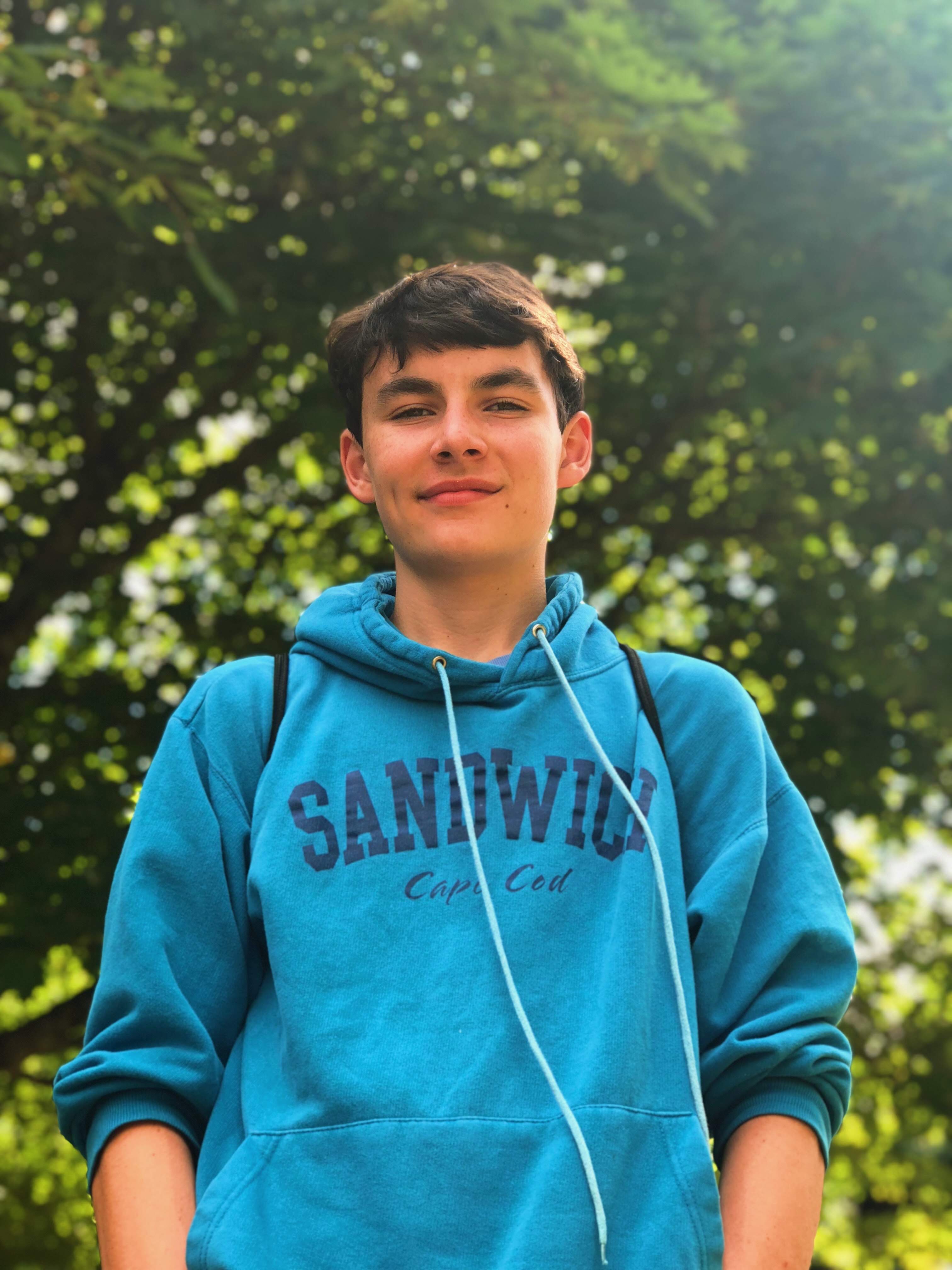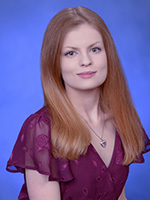Senior Projects 2023
Senior Projects 2023
Anthony Barrera and Nick VogelProject Name: FI320 Calculator |
|
Barbara Kavanaugh and Christian ParkerProject Name: Maryvale Alumnae Network |
|
Daniel Gillcrist and Jaymin OrtegaProject Name: Greyhound Financial Planning We intend to create a website to capture this budgeting functionality. It would include a template for students to use for experimenting and budgeting. It would also include interactive information for the student to base their budget off of and helpful budgeting tips. Additional information would relate to savings and different budgeting models. Furthermore, the website would include software to assist with other financial operations such as investing and retirement planning. |
|
Emily Bui and Gio EurestiProject Name: Digital Color ToolsClient: Professor Jon Malis To aid in Professor Malis’ research, he proposed two potential major features, and requested our application to be available as a web app. First, he is looking for a pixel-map generator, with the hopes of being able to use these randomly generated grids as springboards for larger image-based compositions. The generator would take an x and y value for the grid size, and return an image of that size in which all of the pixels in the grid are a randomly generated grayscale value. These images should be able to be downloaded as a .TIFF, .PNG, or .JPG so that users can then run these grids through photoshop’s iterative processes. We are also hoping to provide users the option to generate RGB color pixel maps. Additionally, Professor Malis’ research aims to examine the relationship between the human eye and technology in how each agent perceives color. In order to aid this part of his research, we will create a page that will allow users to specify a LAB model color value and the program will determine whether this color can be accurately represented in different color spaces, specifically, SRGB, Adobe RGB, ProPhoto using color math. If the value can be represented, the program will display that it can be, if not, it will display a close approximation to the requested color for that specific colorspace. We may implement these optional features in addition to one or both of the major features listed above. These include a login/logout system where users are able to make their own accounts, an image gallery where people can post their generated pixel maps and leave likes and comments on other users' submissions. |
|
Erik Henson and Michael HigginsProject Name: Public Relations Student Society of America WebsiteClient: April Hartman and Shanley Honarvar The project is a website for Loyola’s charter of the Public Relations Student Society of America (PRSSA). It will act as a source of information about the organization and as a point of contact for outsiders of Loyola to know about what the organization does. It will contain records of previous meetings and announcements of upcoming meetings and guest speakers. |
 |
Hannah ManneringResearch Name: Predicting the similarity of bacterial genomes within an environmental DNA sampleAdvisor: Dr. Adam Phillippy The goal of this project is to develop a tool that predicts the type of a bacterial genome in an environmental sample by analyzing the abundance and composition of specific DNA sequences. DNA signatures are unique nucleotide sequences that can be used to distinguish organisms from all other species. Sequencing DNA is important for understanding what unknown samples might be, which can help identify viruses and diseases. Current approaches identify DNA sequences that allow for the efficient detection of containment of a set of reference sequences within a metagenomic mixture. One approach, Mash Screen, measures the containment of metagenomic reference sequences. However, current approaches lack in identifying novel genomes that are not in the database. Our research plans to analyze k-mers. K-mers are words of DNA that are k nucleotides long and can be extracted from genomic assemblies by running a k-length window across the DNA sequences. In short, k-mers can be used to compare DNA sequences by identifying how many k-mers are shared between sequences. Thus, we propose the approach of a machine learning classifier that takes k-mer presence/absence and abundance when making compositional predictions about which microbial sequences are present in an environmental DNA sample. For training, we will be looking at genomes with known divergences, such as Staphylococcus and Streptococcus from the NCBI RefSeq database. Containment (a type of sequence similarity) will be calculated using MashScreen. DNA sequencing data will be simulated using available tools, and we will run the sequencing reads through a mash screen to compute a k-mer vector for each simulated sample. This vector will be used as input to our machine-learning classifier, which will be trained using the known similarity of the genomes. |
|
Jomaly Ruiz SierraResearch Name: Cloud & Remotely Store Data Extraction (CDX) Using Account CredentialsAdvisor: Richard Ayers This project aims to test digital forensic tools capable of extracting and reporting supported cloud-based application data. The testing performed is based upon defined specifications, test procedures, test criteria, and test sets to ensure the reliability of Cloud Data Extraction (CDX) forensics tools. This project will focus on CDX that can perform the following three tasks only using account credentials: establishing connectivity to cloud-based services, acquiring tokens for authenticating to cloud-based services, and extracting and reporting artifacts from cloud-based services. All three statement conditions will be checked after each test case is run. The cloud forensic tool to be used and tested on this project is the Magnet Forensic AXIOM. The approach to be taken is based on well-recognized international methodologies for conformance testing and quality testing that include the Computer Forensic Tool Testing (CFTT) project at the National Institute of Standards and Technology (NIST), which is a joint project of the Department of Homeland Security (DHS) Science and Technology Directorate, and the National Institute of Standards and Technology. The scope of this specification is limited to software tools capable of establishing connectivity and extracting digital artifacts from supported cloud-based services. |
|
Joseph Luhrman and Molly O'HareProject Name: York Road Initiative Interactive MapClient: Kyra McDonnell Loyola’s YRI/CCSJ programs are interested in an interactive map to bring awareness to their community partners along the York Road Corridor. These partners include green spaces, schools, libraries, corner stores, nonprofits, and others. The map would highlight these locations and allow users to view basic information about them. Additionally, the various neighborhoods along the Corridor would be visually displayed and/or highlighted. The map would be hosted as a web-app viewable by anyone. Additionally, there would be an admin-only interface to allow for the list of community partners to be updated so that software could be easily maintained by CCSJ in the future. This project would bring value to both the Loyola and York Road Corridor communities as Loyola’s community partners are not easily available for viewing on conventional mapping services such as Google Maps. The goal is for both Loyola students and York Road Corridor community members to learn about all of the current community partners and to better conceptualize where they are located. By creating an interactive map and the interface for it to be updated, CCSJ can more easily keep the map up to date as opposed to the PDF they’ve been using since 2017. |
|
Kevin Murray and Tim BaginskiProject Name: Polynomial Matrix IterationClient: Dr. Tim Clark We have been asked to iterate polynomials with matrix inputs. Given a matrix and a polynomial to iterate through, does the matrix converge to an attractor fixed point or does it diverge forever? This could be calculated by comparing the difference between each iteration and its previous iteration. If the difference is small (below an inputted threshold) we can assume that the matrix is converging. This program results by computing the number of iterations and the final matrix and its eigenvalue. We may add more variables to the output depending on what factors appear to correlate with reaching the final matrix. This is where machine learning may come in handy, detailing variables that appear to impact a matrix converging or diverging. |
|
Hunter Malone and Keenan KirkProject Name: Communication in AAction WebsiteClient: Giovanna Adornetto Our client has asked us to redesign her current website with some features being added to it. Our client operates a speech and language therapy service where customers currently contact her requesting information about her services and that is how customers are able to schedule and plan their appointments. Our goal during this project is to add features on the website so that customers can schedule an information meeting to meet with our client if they would like to discuss information about the services. Customers will also have the ability to purchase services which are done by purchasing a time slot from a calendar. Along with these additions we will be redesigning the website from the ground up with both design and information that our client desires. |
|
Mitchell Bardsley and William BrunoProject Name: The Language Learning Center (LLC) OnlineClient: Kelly Keenan The Language Learning Center (LLC) is the hub for all language professors at Loyola University Maryland. Professors host their classes in the provided classroom space, have access to a wide range of international films in roughly ten languages, and can request support from the staff for any task from reserving a room to creating and hanging a promotional flyer. There is currently a website for the LLC, but it does not support all of the functionalities that it potentially could. Further, many features such as viewing the inventory, making reservations, and finding language resources are scattered around multiple websites or applications like Microsoft Teams, and are difficult to account for. Therefore, the goal is to create a new separate website for the LLC, which will add vital functionality, as well as consolidate all of these important documents and resources while being more visually appealing than before. |
Senior Projects 2017 Senior Projects 2018 Senior Projects 2019 Senior Projects 2020 Senior Projects 2021 Senior Projects 2022

